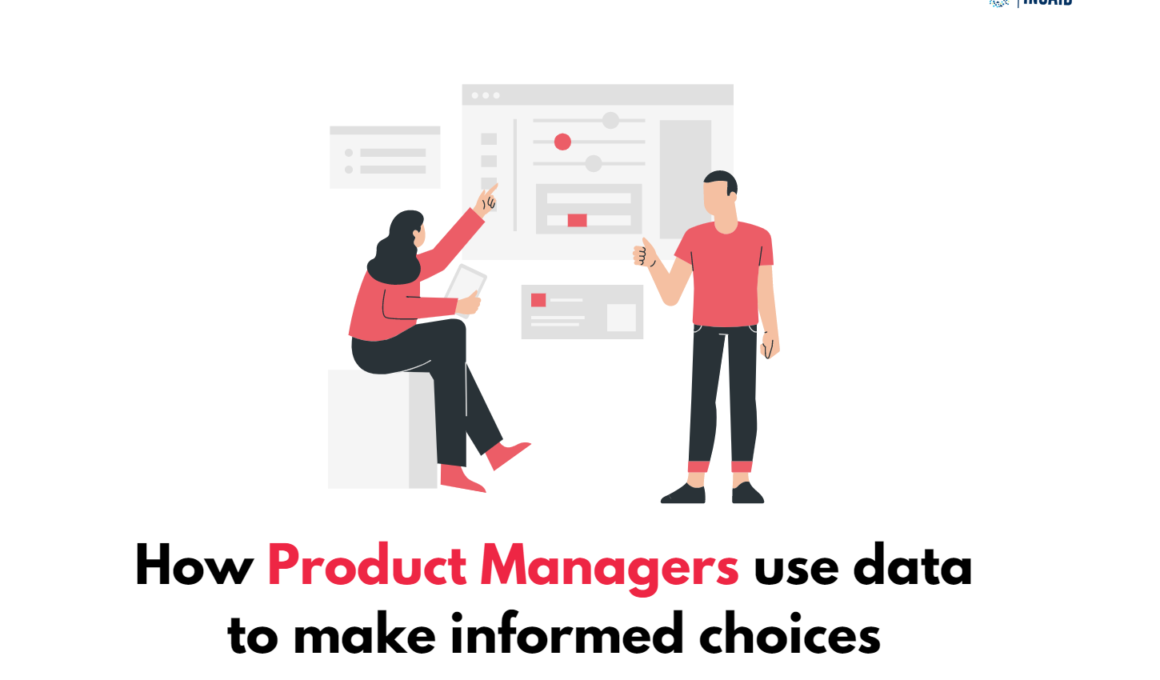As a product manager, you are responsible for guiding the development and lifecycle of a product from conception to withdrawal. This involves gathering and prioritizing customer and market requirements, defining the product vision, and working with cross-functional teams to bring the product to market.
Data plays a crucial role in this process, as it helps you make informed decisions and optimize the product for success.
In this blog, we will explore the various ways in which data is used in Product management–
A) Market and Customer Research
One of the primary ways that data is used in product management is for market and customer research. This includes understanding the target audience, their needs and pain points, and what features and benefits will be most appealing to them.
There are several different methods for collecting this data, including:
1. Surveys
Surveys are a standard tool for gathering customer feedback and insights. They can be conducted online or in person and can be designed to collect a wide range of information, including demographics, satisfaction levels, feature preferences, and more.
2. Focus Groups
Focus groups are a way to gather in-depth feedback from a small, targeted group of customers. They typically involve bringing a group of customers together in a moderated discussion to explore their thoughts and feelings about a product or topic.
3. Online Reviews
Online reviews, such as those found on Amazon and other sites, can provide valuable insights into what customers like and dislike about a product. By analyzing these reviews, we can identify trends and patterns that may not be apparent through other methods of data collection.
4. Social Media Monitoring
Social media platforms like Twitter, Facebook, and Instagram can provide a wealth of data on customer sentiment and preferences. By monitoring and analyzing social media conversations about your product, you can get a sense of what people are saying and identify areas for improvement. Once you have collected this data, it is important to analyze it to identify trends and insights that can inform the product roadmap and go-to-market strategies.
5. Setting and Tracking
Another key aspect of product management is setting and tracking key performance indicators (KPIs). These are metrics that measure the success of the product and can include things like user adoption, retention, and revenue.
Here are a few examples of how data can be used to set and track KPIs in product management:
1. User Adoption
If you are launching a new product, you will likely want to track metrics such as the number of sign-ups, the number of active users, and the conversion rate from free trial to paid users.
By analyzing this data, you can get a sense of how well the product is being received and identify areas for improvement.
2. Retention
Retention is a key metric for many products, as it reflects how well the product is meeting the needs of its users. Data on retention can be collected through metrics such as the number of returning users, the length of time users spend with the product, and the churn rate.
By analyzing this data, you can identify any issues that may be causing users to stop using the product and take action to address them.
3. Revenue
For products that generate revenue, tracking metrics such as the number of paying users, the average revenue per user, and the lifetime value of a customer can be valuable in understanding the financial health of the product.
By analyzing this data, you can identify opportunities for growth and optimize pricing and monetization strategies.
4. Customer Satisfaction
Data on customer satisfaction can be collected through methods such as surveys, focus groups, and online reviews and can help you understand how well the product is meeting the needs of its users.
In order to set and track these KPIs effectively, it is important to have a clear understanding of the goals of the product and what metrics are most relevant for measuring success.
B) Product Development
Data is also an important tool for product managers in the development process. It can be used to prioritize features and identify which ones will have the biggest impact on the product’s success.
Here are a few examples of how data can be used in the product development process:
1. Feature Prioritization
When planning a new product release, it can be tempting to try and pack in as many features as possible. However, this can often lead to a cluttered and confusing product that is difficult for users to navigate.
By using data to prioritize features, you can ensure that the product remains focused and delivers value to users.
2. Prototyping and MVP testing
Before launching a new product, it is important to test and optimize it to ensure that it meets the needs of its intended audience. Data can be used to inform the prototyping process and identify areas for improvement.
You can also use the data from MVP testing to validate assumptions about the product and make informed decisions about which features to include in the final release.
3. A/B Testing
It is a method of comparing two versions of a product to determine which one performs better. It can be used to test things like design variations, feature sets, and pricing models.
By collecting data on how users interact with the different versions of the product, you can identify which one is most effective and make informed decisions about the final product.
4. Ongoing Product Optimization and Management
This includes analyzing user behavior, identifying opportunities for improvement, and making data-driven decisions to drive product growth.
Here are a few examples of how data can be used in ongoing product management:
A. User Behavior Analytics
By collecting and analyzing data on how users interact with your product, you can identify patterns and trends that can inform improvements and updates.
B. Customer Segmentation
Customer segmentation is the process of dividing your customer base into smaller groups based on shared characteristics or behaviors. By segmenting your customers, you can tailor your product and marketing efforts to better meet the needs of specific groups.
C. Personalization
It is the process of tailoring a product or experience to meet the individual needs and preferences of a user. By using data on user behavior and preferences, you can create personalized experiences that are more relevant and engaging for users.
D. Predictive Analysis
It is the process of using data and machine learning algorithms to predict future outcomes. In product management, this can be used to forecast demand for a product, identify potential issues before they arise, and make informed decisions about future product development.
Data plays a central role in product management, from market and customer research to development and optimization. It helps product managers make informed decisions, set and track KPIs, and continually improve the product.
As such, it is essential for product managers to have strong data analysis skills and the ability to use data to drive product success. By leveraging data throughout the product management process, you can create better products that meet the needs of your customers and drive business growth.
 Pin
PinIf you want to make a grand entry into the product management world, then our Product Management certification is the exact course that you can pick!
To learn and grow in the field of product management, check out our blog page for such information.
If you enjoyed this blog, please consider clapping, responding, or subscribing. We appreciate your opinion and feedback.






